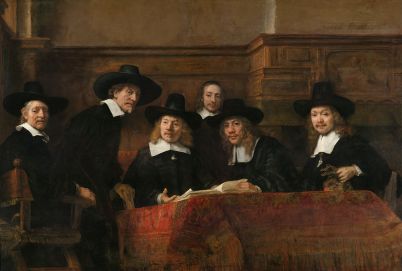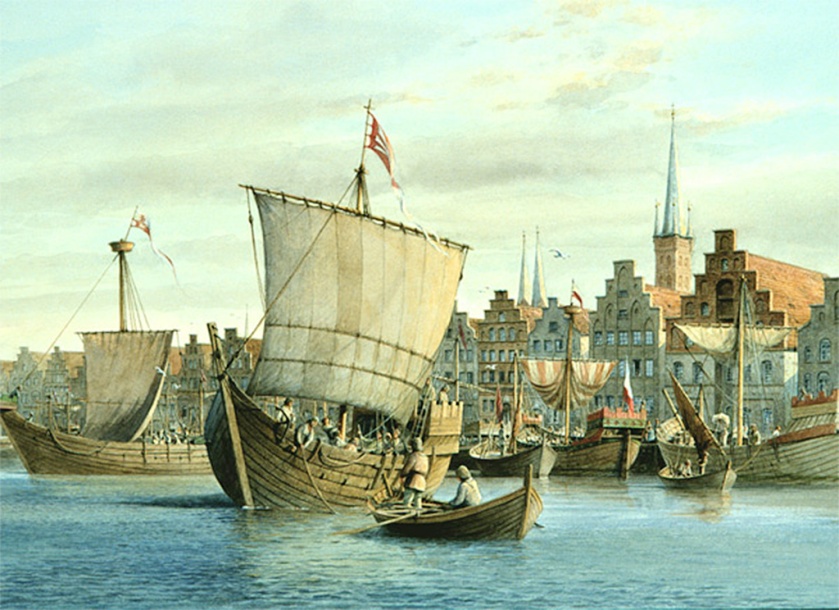 In the post before last, I looked at a pair of challenges facing college and university administrators these days:
In the post before last, I looked at a pair of challenges facing college and university administrators these days:
- Faculty are increasingly contingent.
- Drivers of educational effectiveness are mostly interpersonal.
That second one has always been true, but it’s presenting new challenges. When we try to improve the quality of learning in our universities at large scale, the gains are hard to measure and even harder to replicate. Instead, what seems to matter most is cultural: a community’s shared commitment to high standards, a personal investment in each other’s success, and a stable setting in which to collaborate with colleagues on behalf of our students, propagating current best practices.
These challenges aggravate each other. The best current educational experiences are apparently sustained in groups, just as our workforce is going free agent.
And I don’t think we’ll see either trend reverse course: these are arrows, not pendulums.
So this has me wishing for a new stable medium through which to propagate our high standards and current best practices. These days such a medium is clearly not the individual college or university campus, which is eagerly trimming its long-term commitments to its workforce.
Nor do I think the appropriate medium is our narrow field- and discipline-based professional associations, the society of chemists or of residence life directors or registrars or anthropologists. They have the stability, but their focus is too particular.
Could we see a world where our colleagues enjoy a committed relationship not to the institution or specialization, but instead to the profession of educating college students?
Such commitments to profession were more common before the industrial revolution, in guilds of furniture makers, say, or financiers. Those fell out of favor as we got used to corporations as a way to concentrate capital, and invented the assembly line, and the company town. Like our campuses, these were structures that intentionally regularized and contained activity, setting themselves apart.
Our own hyper-connected age is making such inherited islands of enterprise obsolescent; they feel like walled fortresses just as we’re learning to fly.
In last year’s The Edge of the World, A Cultural History of the North Sea and the Transformation of Europe, Micheal Pye describes the virtues of such a non-corporate, non-national commitment, one that was even broader than the professionally focused guilds.
Here’s how he explains it, the trading affiliation known as the Hanseatic League:
Language mattered very much; all the Hansa towns, from the Low Countries to Russia, understood the same Low German. Taste also traveled with the Hanseatic ships: the same clothes and crockery, the houses built of brick and stone with their step gable roofs and the granaries in the loft and their salt stores, just like any Saxon farm. The towns all have narrow alleyways that run from the harbor to the central market square, the churches are all built as meeting halls. It is as though Hansa households carried their hometowns with them, a shared defense against the foreignness of where they were . . . There was also the insistence that a merchant who traveled was as good as any fixed and static noble any day: the Hansa creed. Rostock town council put doubtful coats of arms on their signet rings to prove the point, and so did Rostock merchants based in Malmo in Sweden (which never was a Hanseatic town and belonged to the Hansa’s Dutch enemies); and so the habit went about the Baltic.
Replace “Hansa” with “adjunct faculty and contractors” in that quote, and maybe replace “houses built of brick and stone with the step gable roofs” with an educational innovation like ePortfolios, and see what you get. I think it’s cool that “a merchant who traveled was as good as any fixed and static noble.” We could learn from that.
Mostly, I read this and see an intentional, sustainable propagation of culture, brought on by an attachment to something above and beyond formal structures like civil law or the nation state. In fact, that closing observation about the Hansa cultural taste crossing the national lines even of combatants was especially striking, and I was glad when he returned to it later:
The legend of the Hansa is much more golden than the reality. It was taken once to be a time of German hegemony on the seas, a matter of national pride, but the Hansa had nothing to do with nations, least of all Germany: its flexibility, its success, depended on not being national, and often on staying far away from the Emperor who was the one central power in what is now Germany or else opposing him.
Get it? The success was because of the flexibility, not despite it. They benefited by resisting rigid affiliation.
Could we? Are our adjuncts journeymen? Could the short terms of our staff and administrators become a strength? Are we ready to revisit guilds?
I’m not aware of such structures today, but I think creating them might not have to be from scratch. A recent AAC&U project called “Faculty Collaboratives” carries some Delphi Project DNA, explicitly connecting faculty from multiple states, institutions, and contract types around the core proficiencies of liberal learning, with technologically facilitated social networking hubs to pool what they do and learn, and to norm expectations. The much larger Multi-State Collaborative pulls in the same direction.
Such work finds a ready audience, I think because of a favorable quirk of human nature. We will observe the rule of law to a point, but our real behavior is set by the social norms around us, which we find very hard not to imitate. We’re nourished by them.
 I was recently talking about this with political scientist Timothy Dale of the University of Wisconsin Lacrosse. He’d been in Ghana, a country that proudly considers itself Africa’s oldest democracy. They have the same laws and political institutions we do in the U.S., but have failed to beat corruption to the extent we have here.
I was recently talking about this with political scientist Timothy Dale of the University of Wisconsin Lacrosse. He’d been in Ghana, a country that proudly considers itself Africa’s oldest democracy. They have the same laws and political institutions we do in the U.S., but have failed to beat corruption to the extent we have here.
He was there at the time of the Blagojevich scandal, and had a hard time explaining to Ghanaians why American citizens were disgusted that the governor of Illinois would sell a senate seat. To them this seemed like a natural way to realize the value of a clearly desirable asset. It was socially normed. And for us, the revulsion was a similarly socialized condition, different from the way we react to other violations of the law, for example speeding. I find this internalizing of social cues idiosyncratically, utterly human.
Since talking to him I’ve seen this effect everywhere.
Higher ed can do more to tap into that, I think. The front-line faculty and student affairs educators I know are deeply committed to student learning, but lack the regular interaction with their peers from other institutions, the first-hand exposure to how others teach, to develop a social norm around quality. But I believe there’s a hunger for it.
And more than hunger, I’m seeing cases in my own corner of higher education where nothing else seems to work — where the adoption of guilds may be not only desirable but also inevitable.
More on that later.



One thought on “guilds, part two”
Comments are closed.